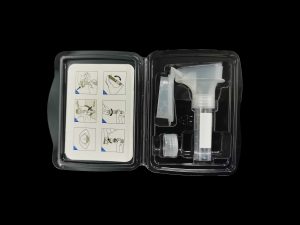การแพร่ระบาดระลอกที่สามเกิดขึ้นในฮ่องกงในช่วงเจ็ดวันที่ผ่านมา, โดยมีคดีท้องถิ่นหลายร้อยคดีเกิดขึ้นในหนึ่งสัปดาห์. ของ 28 ยืนยันผู้ป่วยวันที่ 11, 16 เป็นกรณีท้องถิ่น, 7 ไม่ทราบที่มา, และ Tsz Yunshan กลายเป็นพื้นที่ที่ได้รับผลกระทบหนักที่สุด. วันที่ 12, 38 มีรายงานผู้ป่วยยืนยันรายใหม่ในฮ่องกง, ซึ่ง 13 ของ 30 local cases were unknown. Zhang Zhujun, director of the Infectious Diseases Division of the Centre for Health Protection of the Department of Health, said bluntly that it is the most serious stage since the outbreak of the epidemic in Hong Kong, and the situation is even more serious than that in March. Liang Zhuowei, Dean of the School of Medicine, University of Hong Kong, said that Hong Kong has just really faced a local outbreak, which means that the virus has mutated and the transmission rate is higher than that of Wuhan before the closure of the city at the end of January.
It is estimated that there are at least 50 undiscovered recessive communicators. After analyzing the trend, Lin Chaoying, the front desk of the Observatory, warned that if there are no corresponding measures, the number of confirmed cases every day after 10 days may be as high as hundreds, and even increase in geometric progression; อย่างไรก็ตาม, there are only about 1000 anti-epidemic beds in Hong Kong, and he is worried that he cannot meet the demand. Lu Chongmao, Dean of Shenzhen Hospital of HKU, compared the epidemic situation in Hong Kong with the “mountain fire” on the 12th, saying that the epidemic situation in the Mainland has been well controlled and Hong Kong should definitely learn from it. According to the national standard, Hong Kong should do nearly 20,000 tests every day.
There are several reasons for the rebound of the epidemic: อันดับแรก, a large number of Hong Kong people and air and sea transport personnel entered the country from high-risk areas, and some people brought the virus into the community; ที่สอง, due to the recent slowdown in the epidemic, some citizens have weakened their awareness of epidemic prevention and increased their social activities. If they have viruses, they will lead to “small outbreaks in the community”; ที่สาม, some drug broadcasters are highly mobile industries, such as taxi drivers, domestic helpers and part-time employees in restaurants, » Swabs ไนล่อนที่ผ่านการฆ่าเชื้อแล้วทิ้งสำหรับการทดสอบ COVID-19. They have many opportunities to contact with other people, and the risk of transmission is high.

















